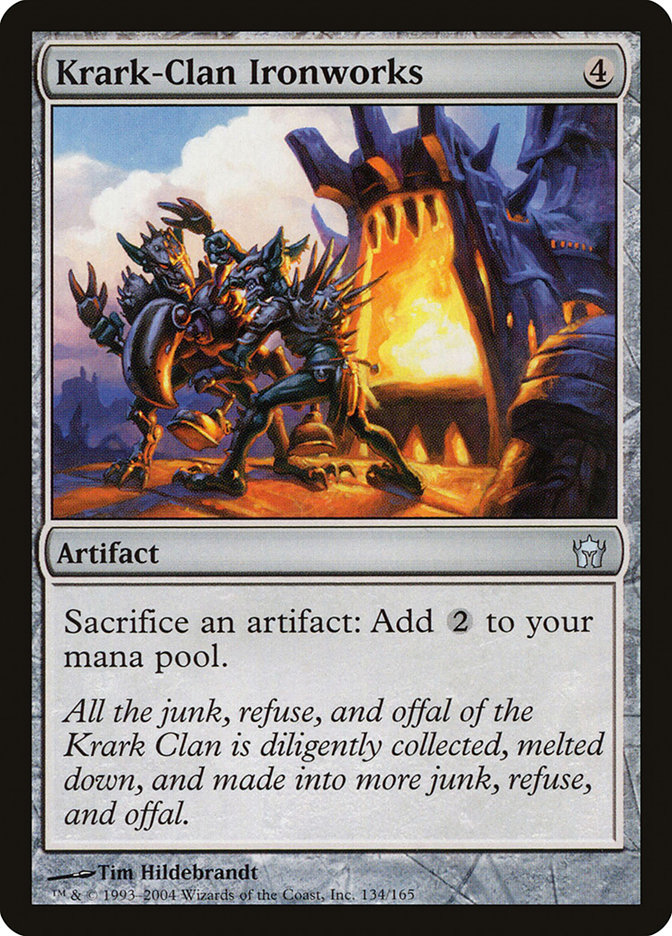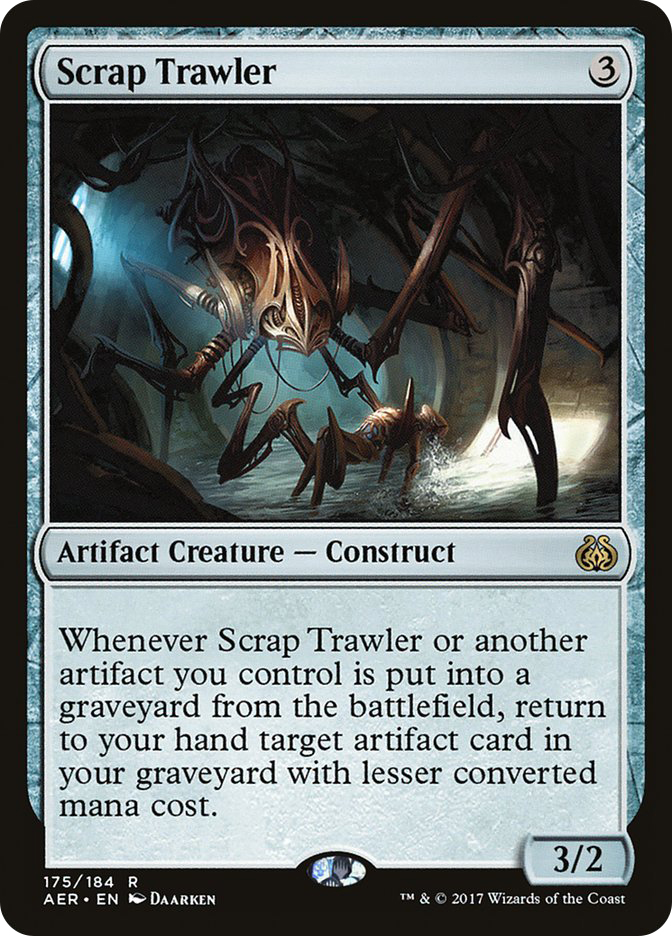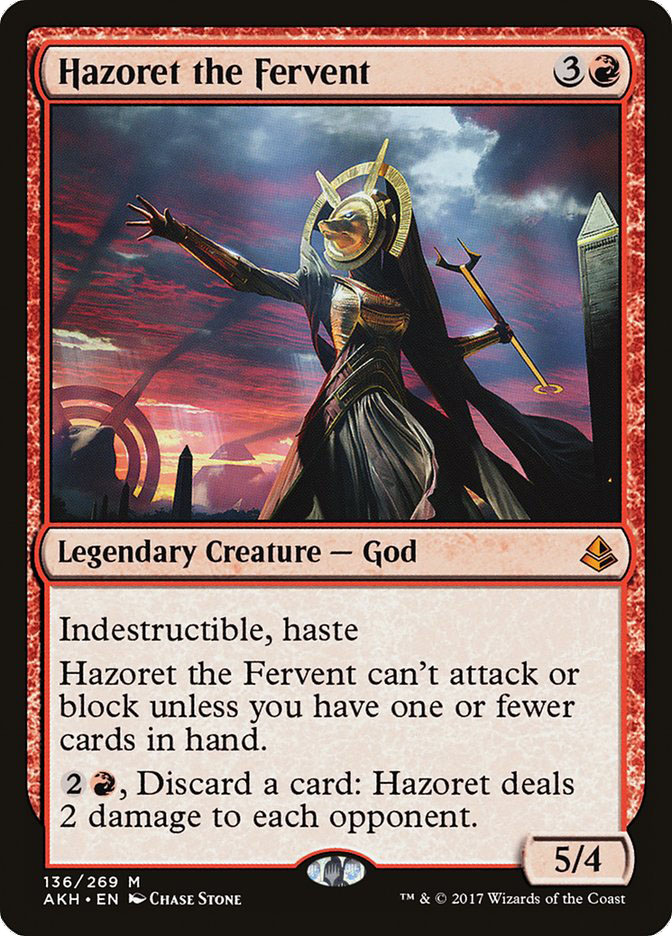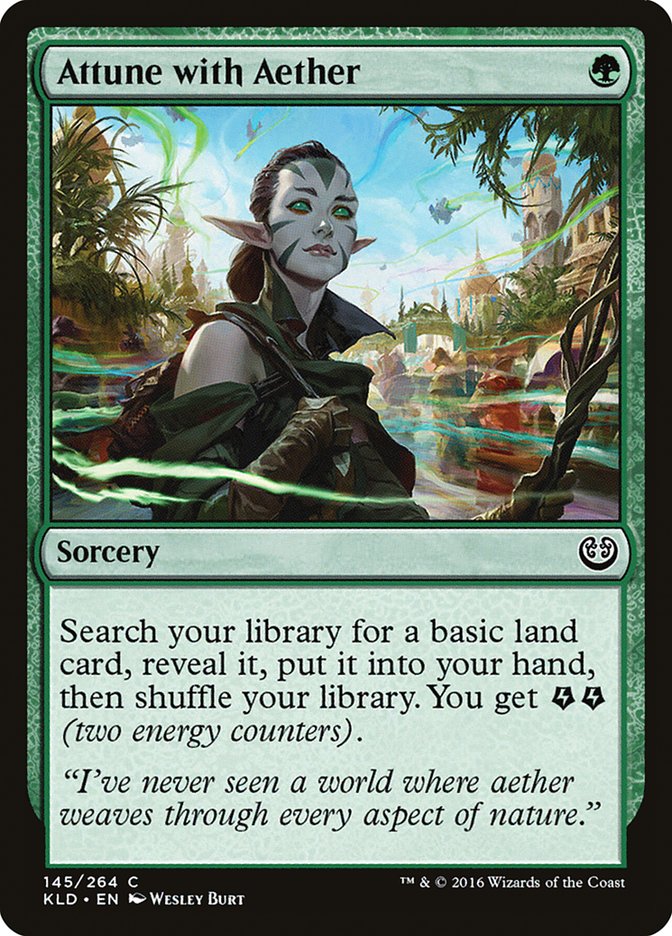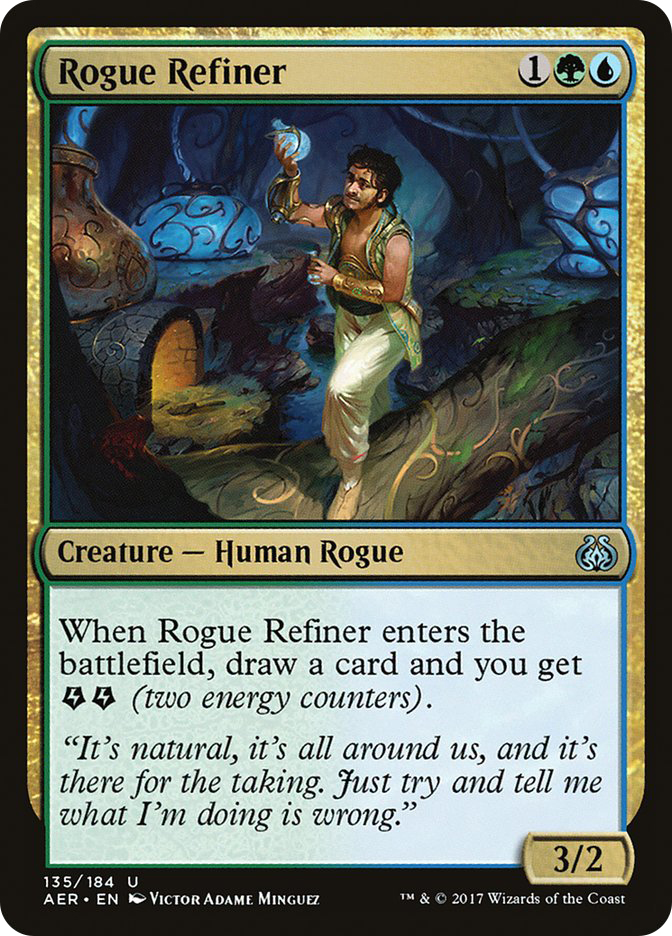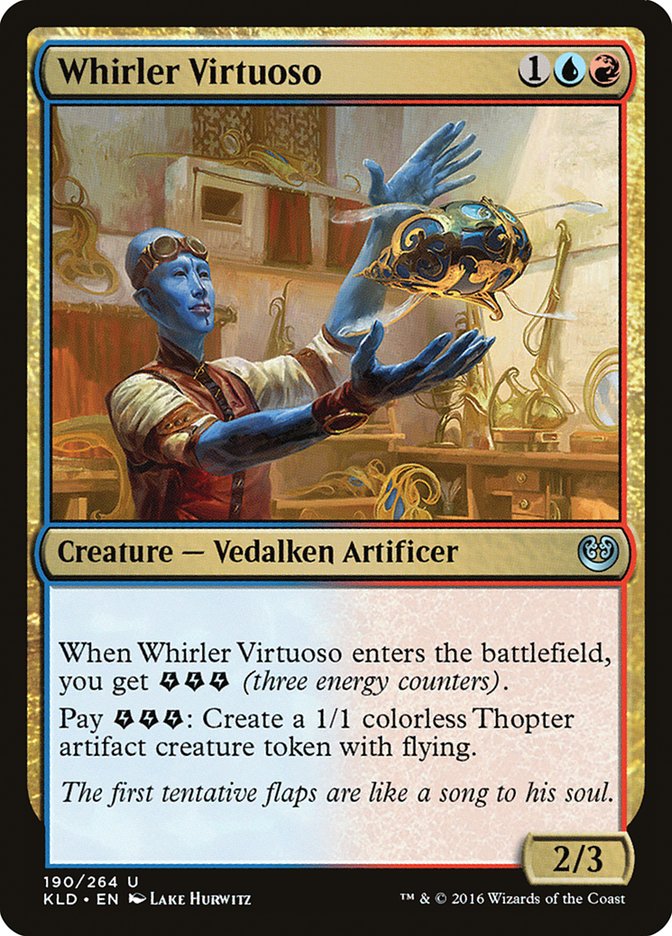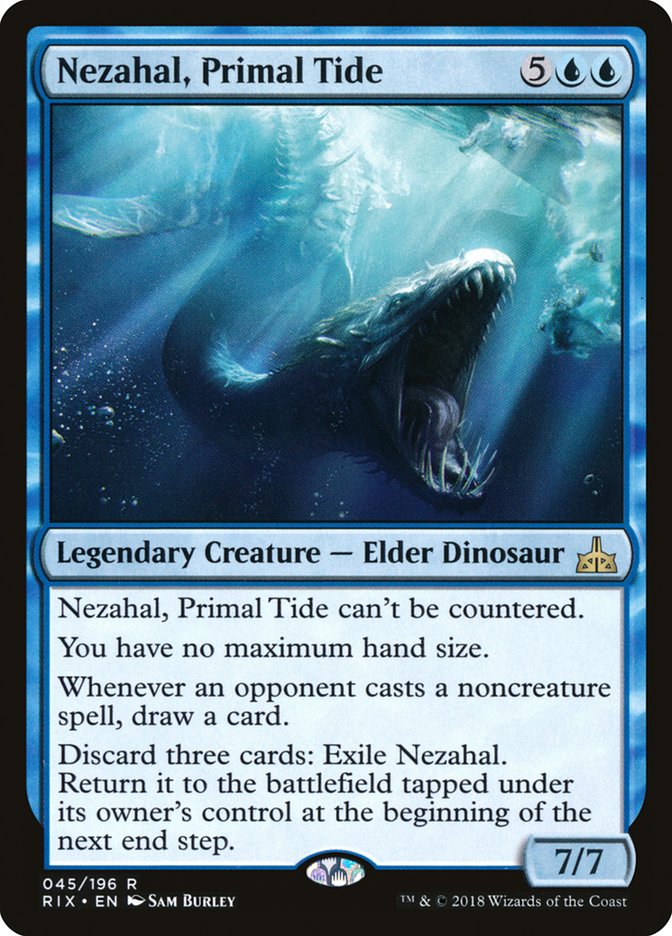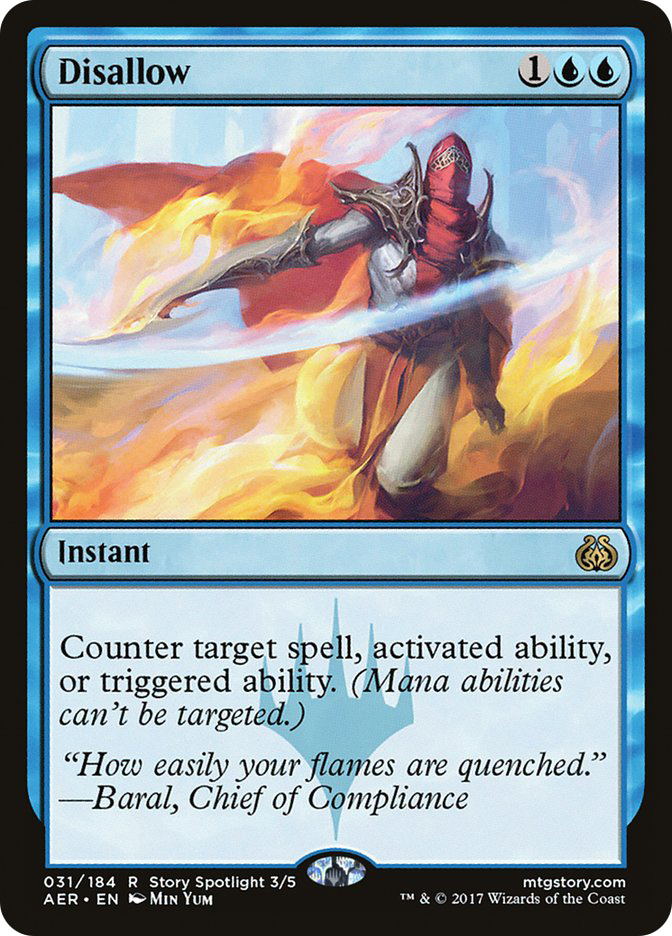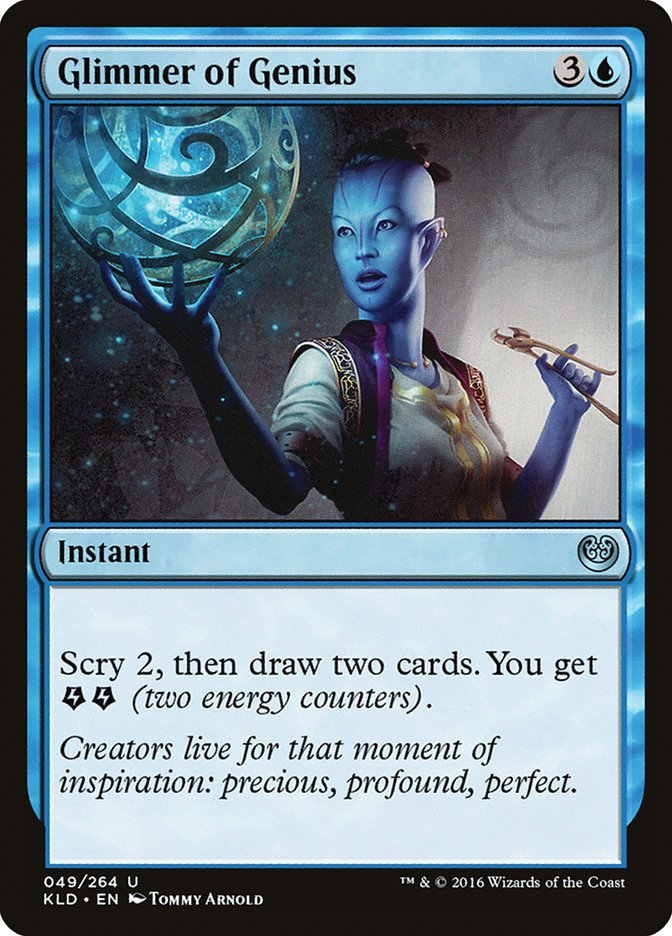Fresh off a mediocre 9-7 finish at Pro Tour Rivals of Ixalan, I have returned to a Standard format fresh from bannings, and it feels great to be back. The Modern Pro Tour was an experience, but I must admit, not an entirely negative one. I played U/W/X Control decks for months prior to the tournament, putting up average records in competitive Leagues on MTGO. This did not help build my confidence in the archetype or my ability to win in the format at all. I tried multiple variations and beat half the field relentlessly, but was crushed by the other half. That isn’t the recipe to win a Pro Tour or a Grand Prix in my experience, so I went for the Hail Mary.
Creatures (9)
Lands (18)
Spells (33)

I’ve always been a lover, and creator, of combo decks since I entered the battlefield in 2003. Of course, Brian Braun-Duin eloquently paints my picture in one simple Tweet:
This is a rare treat. Shaheen is like 95% control, 4% weird fringe combo, 1% mono red. Next time you play a combo deck will be in 2021. It will be Tier 5, and you'll go 7-3 with it.
— Brian Braun-Duin (@BraunDuinIt) February 4, 2018
He meant this as a compliment, because I have a knack at playing off-the-wall decks at a level (or two) above their expected performance level. I have tried on multiple occasions to transfer that skill to decks like Temur Energy or Mono-Red, but ultimately I’ve decided that my home is in the fringe. Krark-Clan Ironworks is about as rogue as it gets in the Modern format. There were exactly two players piloting it in Bilbao last weekend, both of whom made Day 2 with positive finishes. My 7-3 record in Constructed came easily, as I crushed the competition with a deck that felt levels above the enemy in terms of power.
When you analyze the individual cards, the deck can seem like a joke, but when all the pieces join, a Turn 4 win is what you get. Turn 3 wins happen more often than you’d think, requiring only a Mox Opal, Mind Stone, or Everflowing Chalice. Winning early with powerful synergies is where you want to be in Modern. After falling short with my control strategies, I was very happy with the existence of this combo option.
Today’s article is about Standard, but I wanted to give a quick debrief on this KCI masterpiece. Many of you all have asked me about the list and the ins and outs of the combo, so here you go!
Standard: Control Is King
Creatures (5)
Lands (26)
Spells (29)
- 1 Essence Scatter
- 4 Harnessed Lightning
- 3 Glimmer of Genius
- 3 Disallow
- 4 Censor
- 1 Hieroglyphic Illumination
- 3 Abrade
- 3 Supreme Will
- 2 Hour of Devastation
- 2 Vraska's Contempt
- 3 Search for Azcanta
Sideboard

The moment I plopped down at the gate for my flight home from Bilbao, I put together Grixis Control on Magic Online and began to battle. The deck and reasonings behind card choices haven’t changed drastically from the last time we spoke, but this new format required some adjustments. My first League resulted in an easy 5-0, defeating two control decks, Mardu Vehicles, and Grixis Energy before finishing off with a crushing blow to Mono-Red. I’m not going to lie: typically my first run at a format doesn’t go too well, but this Standard had better watch out.
Control’s biggest threat to prosperity was Mono-Red, and even though the deck is still competitive, it lacks the flood protection that doomed control players from the beginning. Without a way to fling excess lands at our life total, Mono-Red opponents are at the mercy of their draw steps to deal the final points of damage.
Being at five life now feels like 50 after stabilizing, which is the way it always should have been. The reason we take a beating in the early turns with control is to eventually turn the corner and win. We play 26 to 27 lands, cantrips, cycling cards, and card draw to eliminate losses to flood at the cost of sacrificing the early game. It never sat right with me when aggressive decks could build the lowest curve, play the fewest lands, and somehow still have an advantage in the late game. That reality has shifted and the ball is back in our court.
I’m not saying that Mono-Red is a good matchup by any means, but it’s much easier than it used to be. I cut down on the amount of Multiform Wonders, took out the Fatal Push, and shifted around the curve to be stronger against slower decks. Without Temur Energy in the mix, Abrade has risen in stock. There isn’t a need for additional hard removal for out-of-control Longtusk Cubs and having the ability to destroy artifacts is going to be big going forward. Mardu Vehicles is rising in stock, as are a few God-Pharaoh’s Gift strategies, so I feel much safer having additional support.
A few months ago, I campaigned for some Energy bannings in a few articles. I mentioned that these bannings would be an overall negative event for control decks because of how good the matchup was for us. That still holds true now, as I miss beating up on Temur decks, but luckily Mono-Red got sideswiped in the process. Mono-Red being beatable has shifted the paradigm of Standard, and if you are a Magic Online enthusiast, you’ve already noticed the amount of control decks in the queue.
It’s possible that Grixis Control isn’t the best type of control deck moving forward. I was always a fan of two-color control over three, but the inclusion of Harnessed Lightning was mandatory before. Temur Energy made it a requirement to play the red Doom Blade of the format and I benefited greatly from attacking the matchup with the power of red. Hour of Devastation was no slouch either, cleaning up indestructible Gods, enemy planeswalkers, and all non-Vehicles in between. These two cards are still fantastic in the current metagame but should not be the reason for a third color.
The biggest draw to red at this point is the sideboard. I have fallen in love with Whirler Virtuoso off the bench, bringing it in against the fastest and slowest decks in the format. Against Mono-Red, Whirler Virtuoso completely locks up the ground, and when battling against a control foe, it creates a miniature army to apply pressure. There are few cards in Magic that are this effective at combating both ends of the spectrum. U/B Control has a few nice options, but none of them are quite like Whirler Virtuoso. Grixis Control takes advantage of the energy mechanic that was left behind, so it’s worth testing before dropping a color.
One of the biggest changes to the deck was the removal of Opt. Opt was a reliable source of card selection in a world where Temur Energy, Mono-Red, and control decks all existed in large numbers. The current metagame contains aggressive, low-curve strategies or big mana control decks. Without a huge midrange presence, the deck can be tailored to beat those two decks more effectively. To soften the blow of removing a cheap cantrip, a Glimmer of Genius was transformed into a Hieroglyphic Illumination and another Search for Azcanta was added.
I was struggling against the control mirror with the old list but have since added a third Disallow, a third Search for Azcanta, and a third Abrade to the maindeck. These changes didn’t affect my aggro game much, because it’s still bad. If my opponent casts a Soul-Scar Mage, I understand that death is probably imminent and the sideboard will come to the rescue. To change the Game 1 aggro outcome on a consistent basis, you’d have to drop most of the blue cards for red or black removal. Control will be such a huge part of the metagame now that doing so would be detrimental to your tournament success.
The sideboard still packs ten cards of hate for the aggro matchup and I don’t regret it at all. The first game against all non-aggro opponents is strong and the matchup against fast decks isn’t impossible. That is the life that we control mages sign up for!
The best card to defeat a fellow control mage with is Nezahal, Primal Tide. The blue Dinosaur provides a Pearl Lake Ancient-style control bashing with a little Consecrated Sphinx card advantage. I think it’s worse than both of those cards were in their respective formats, but it’s the best we have. Since many control decks in the format are equipped with Ipnu Rivulets that mill us in the final turns, we must get creative with win conditions.
The Whirler Virtuoso plan is effective, but not always enough to seal the deal. This massive creature will kill an opponent swiftly and has enough resilience to survive a removal spell or two. Luckily for us, most control opponents won’t have much more than a couple copies of Vraska’s Contempt after sideboard, so sleeve this critter up with confidence.
Control being on top of the hill isn’t always best for us loyalists. The mirror can be mind-numbing and skill-intensive, giving victory to the more experienced planeswalker most of the time. Discipline is the name of the game, including allowing spells to resolve that don’t end the game immediately (like The Scarab God or a timely Torrential Gearhulk).
This means you must turn off that switch in your brain that tells you to counter everything on curve, draw some cards, and play a win condition. That line works against every other deck out there, but not here. Game 1 is determined by protecting The Scarab God late with all those hard counters you saved or decking your opponent by allowing their card draw to resolve while they waste resources stopping yours.
It’s truly a dance Game 1, and the more experienced contestant wins. Sideboarded games are different and I have always preferred to sling some big, silly win condition at them that they can’t handle. I used to bring in all my creatures, but these days we don’t need that Multiform Wonder clunking up the mix.
Practice the control mirror, keep count of the total cards in both libraries, and hold onto hard counters with that icy grip. When control is king, mirror match capability determines victors.


